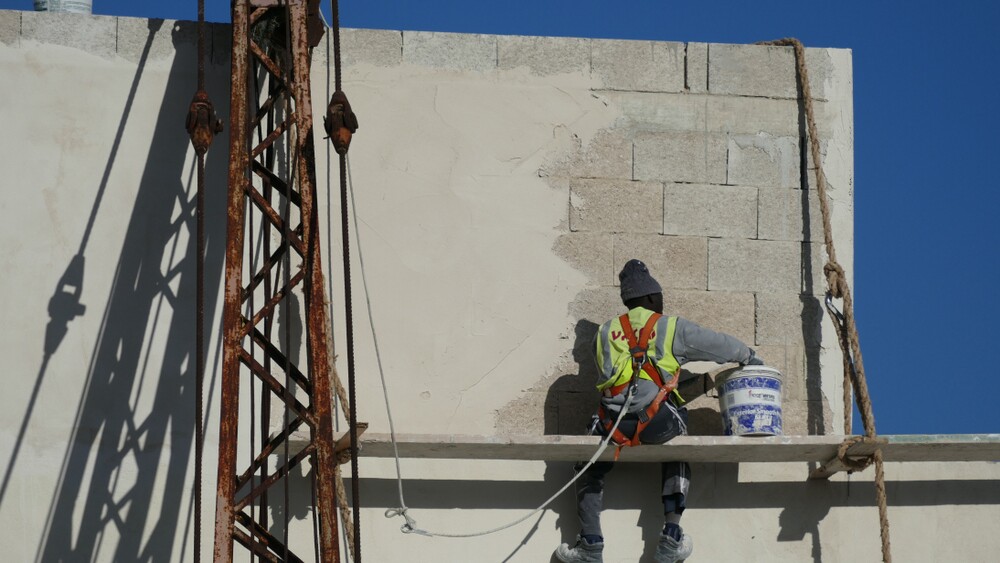The natural reaction to hearing that a product or material has been made with the assistance of modern slavery is to flinch in horror and perhaps disbelief. Unfortunately, the construction industry is ranked second—just behind domestic service—as a problematic industry in terms of its risk of relying on forced labor, according to the 2022 Global Estimates of Modern Slavery, Forced Labour and Forced Marriage report from the International Labour Organization in Geneva. The report found nearly 28 million people are held in forced labor situations worldwide and 160 million children are subjected to forced labor.
“The big question owners in the building industry need to ask themselves is whether they are accepting the slavery discount,” says Sharon Prince, CEO and Founder of Grace Farms Foundation in New Canaan, Conn., an organization with a mission to end modern slavery. “The food and clothing sectors have already begun addressing this issue. We can no longer accept the fair market value of an item without an inspection of labor practices, even if that means we must accept a higher fair market value with inspections.”
Grace Farms’ Design for Freedom initiative provides education and tools to make it easier for people within the building industry to monitor supply chains for unethical treatment of workers.
“We’re in the early stages of developing the transparency needed to identify areas and companies that use forced labor,” says Heidi Creighton, a Los Angeles-based independent sustainability consultant and senior advisor of decarbonization with the U.S. Green Building Council-Los Angeles. “But legislation is likely to be coming that will mean companies face compliance risk if they don’t address forced labor in their supply chain. Today offers an opportunity to lead and lean in on the issue.”
Creighton acknowledges the complexity of supply chain monitoring, but she suggests starting with one project or one material to make progress.
“It’s important for every company to state in their governance materials that they don’t accept forced labor in any of their projects, but they still need to map their supply chains,” Creighton says.
Materials and regions with higher risk of forced labor
Using materials and products sourced from the U.S. helps companies avoid the risk of introducing items produced with forced labor into the supply chain, Creighton says.
However, many products manufactured in the U.S. include parts or raw materials sourced from places that may use forced labor or child labor. Design for Freedom’s 2020 report identified a list of raw and composite building materials that are particularly at risk of being produced with unethical labor practices, including bricks, copper, glass, minerals, solar panels, precursors, rubber, steel and iron, stone, textiles and timber. In addition, the report identified specific locations for products or materials that are known to use forced labor. For example, Brazil, Peru and Russia use forced labor in their logging industries.
The U.S. Customs and Border Patrol agency uses its legal authority to stop materials and products made with forced labor from entering the U.S. and to identify regions or companies that use forced labor. For example, the Uyghur Forced Labor Prevention Act (UFLPA) and the U.S. Forced Labor Enforcement Task Force (FLETF), have been used to prevent the importation of materials and products from the Xinjiang Uyghur Autonomous Region of China, where ongoing genocide and human rights abuses are rampant. More than 2,500 shipments valued at $2.2 billion of products, including PVCs, solar panels and other building materials, were denied entry to the U.S. between June 2022 and December 2023, including many shipped from other countries than China but had components traced back to the Uyghur region.
Enforcement against the import of materials or products manufactured with forced labor creates financial risks for businesses that can be avoided by choosing products with a transparent supply chain life cycle.
“Building materials account for about 45 percent of the average cost of a building,” Prince says. “The inability to get materials or to have them delayed by customs inspections can directly impact the cost of building.”
Builders, architects and developers can send a questionnaire from the Design for Freedom Toolkit to suppliers to request information about their manufacturing process.
“Using a location indicator to identify where a product is manufactured is a first step to look for social equity violations,” says Emily Busam, a technical program manager for the Health Product Declaration Collaborative in San Diego, who leads their social equity technical subgroup. “Location doesn’t tell you everything you need to know, but we’re creating a database to provide sector-specific concerns related to social equity.”
One major challenge is to untangle the entire life cycle of a product or material in a global economy.
“The aspirational component of our work is that we want no forced labor and no child labor for any product anywhere in the world, but that’s almost impossible,” Busam says. “What we can do is make it easier for everyone in the building ecosystem to take incremental steps in their choices of products and materials.”
Certifying social equity performance
Many certifications incorporate information about unethical labor practices in their requirements, including the Social Equity Assessment Method (SEAM) certification and two U.K. certifications, Responsible Sourcing, Construction Products and the Ethical Labour Sourcing Standard. Leadership in Energy and Environmental Design (LEED) version 4.1 includes pilot credits for social equity within the supply chain.
New York City-based COOKFOX Architects, a member of the Design for Freedom Working Group, studied certifications to determine whether they included information about forced labor and to create a database of tools for others in the building industry.
“We looked to see whether these certifications relied on self-reported information, regional risk or third-party verification,” says Russell Beaumont, an associate with COOKFOX Architects. “The more rigorous certifications included third-party audits.”
The terms “forced labor” and “modern slavery” can refer to people held physically against their will, people whose documents are withheld so they cannot leave, those who are threatened with prison, and people whose wages are withheld, Beaumont says.
“If you look at places where jobs are not attractive, labor is historically underpaid and at the most carbon-intensive parts of the building materials supply chain, that’s where you’re likely to also see forced labor,” says Jared Gilbert, an associate partner with COOKFOX Architects. “You can connect forced labor to carbon emissions and sustainability.”
An effort is underway to include ethical labor practices in supply chain certifications rather than introduce a new certification, Beaumont says.
“When manufacturers apply for a Health Product Declaration, which reports on ingredients in their products, we want to include a social equity performance measure,” Busam says. “But we need to know that information is accurate. We need to know that they’re not ‘swashing’—the social equity equivalent of greenwashing.”
The Design for Freedom Toolkit includes a list of certifications that include fair labor audits. However, Prince points out “we can’t certify our way out of this problem.”
“We want developers to ask at the beginning where a product comes from and whether unethical labor practices were used,” Prince says. “Every single project should have at least a few products vetted this way.”
Embodied injustice and building products
While building industry professionals are aware of and addressing the issue of embodied carbon, the terms “embodied injustice” and “embodied suffering” refer to the impact of unethical practices in the built environment.
“Embodied injustice can be used to raise the issue of the disproportionate health impacts and other costs of the life cycle of products from manufacturing to installation to the end-of-life on low-income communities and people of color,” says Rebecca Stamm, a senior researcher with the Healthy Building Network. “For example, initial concern about toxic chemicals focused on occupant health and now we’re seeing improvement. But you can choose materials that are inherently safer throughout their life cycle, starting with raw materials.”
Throughout the supply chain some products and materials are better or worse in every category, Stamm says. The Healthy Building Network’s product guidance uses a simple approach with green, yellow and red indicators on building materials in a variety of categories.
“Builders sometimes feel overwhelmed, but they
can start by picking a category where they use a lot of material, check the research on its life cycle and make a better choice with at least one product,” Stamm says. “Sometimes there’s no extra cost. If there is a cost, it’s important to contextualize it in the cost to the people and places, particularly low-income communities and neighborhoods with people of color, where the product is being manufactured, used and disposed.”
Slavery is illegal everywhere, yet it exists, Gilbert says.
“We need to reframe this issue within the building industry,” Beaumont says. “It’s easy to think, ‘What’s the cost premium of this certified product?’ But the real question should be what things cost when they don’t get the slavery discount.”
To learn more about social equity in the supply chain and how real estate professionals are incorporating healthy and sustainable building materials in development, download ULI’s publication, The Materials Movement: Creating Value with Better Building Materials.






